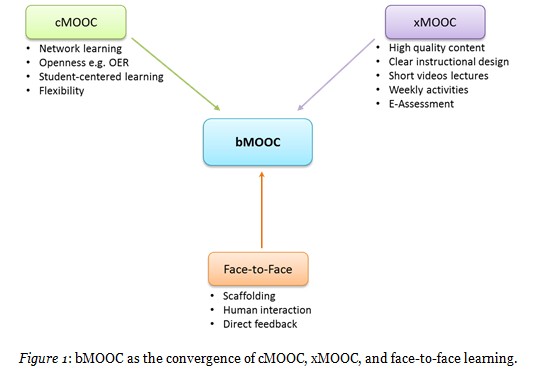A Usability Evaluation of a Blended MOOC Environment: An Experimental Case Study
The paper "A Usability Evaluation of a Blended MOOC Environment: An Experimental Case Study" with my dear friend Ahmed Mohamed FahmyYousef was published in IRRODL.
Abstract:
In the past few years, there has been an increasing interest in Massive Open Online Courses (MOOCs) as a new form of Technology-Enhanced Learning (TEL), in higher education and beyond. Recognizing the limitations of standalone MOOCs, blended MOOCs (bMOOCs) that aim at bringing in-class (i.e. face-to-face) interactions and online learning components together have emerged as an alternative MOOC model of teaching and learning in a higher education context. In this paper, we present the design, implementation, and evaluation details of a bMOOC course on “Teaching Methodologies” at Fayoum University, Egypt in cooperation with RWTH Aachen University, Germany, provided using the bMOOC platform L2P-bMOOC. In order to gauge the usability and effectiveness of the course, we employed an evaluation approach based on Conole’s 12 dimensions rubrics, ISONORM 9241/110-S as a general usability evaluation, and a custom effectiveness questionnaire reflecting the different MOOC stakeholder perspectives.
Reference:
Ahmed Mohamed Fahmy Yousef, Mohamed Amine Chatti, Ulrik Schroeder, Marold Wosnitza (2015).The International Review of Research in Open and Distributed Learning (IRRODL), 16(2).

Abstract:
In the past few years, there has been an increasing interest in Massive Open Online Courses (MOOCs) as a new form of Technology-Enhanced Learning (TEL), in higher education and beyond. Recognizing the limitations of standalone MOOCs, blended MOOCs (bMOOCs) that aim at bringing in-class (i.e. face-to-face) interactions and online learning components together have emerged as an alternative MOOC model of teaching and learning in a higher education context. In this paper, we present the design, implementation, and evaluation details of a bMOOC course on “Teaching Methodologies” at Fayoum University, Egypt in cooperation with RWTH Aachen University, Germany, provided using the bMOOC platform L2P-bMOOC. In order to gauge the usability and effectiveness of the course, we employed an evaluation approach based on Conole’s 12 dimensions rubrics, ISONORM 9241/110-S as a general usability evaluation, and a custom effectiveness questionnaire reflecting the different MOOC stakeholder perspectives.
Reference:
Ahmed Mohamed Fahmy Yousef, Mohamed Amine Chatti, Ulrik Schroeder, Marold Wosnitza (2015).The International Review of Research in Open and Distributed Learning (IRRODL), 16(2).

No comments:
Post a Comment